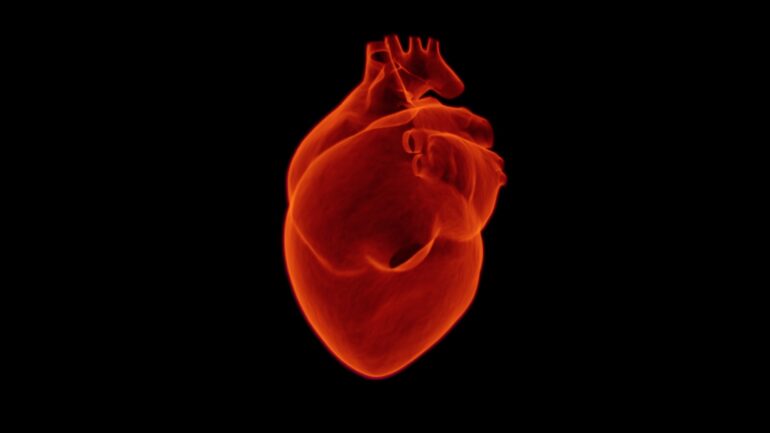TL;DR:
- The University of Pittsburgh researchers develop a machine learning model for heart attack diagnosis.
- The model utilizes electrocardiogram (ECG) readings to identify heart attacks faster and more accurately.
- It outperforms current approaches by detecting subtle clues in ECGs that are challenging for clinicians to spot.
- The model accurately reclassifies 1 in 3 patients with chest pain as low, intermediate, or high risk.
- The algorithm has the potential to assist EMS personnel and emergency department providers in identifying heart attack cases.
- Future plans involve optimizing the model’s deployment in partnership with the City of Pittsburgh Bureau of Emergency Medical Services.
Main AI News:
In a groundbreaking study published today in Nature Medicine, a team of the University of Pittsburgh researchers led by Dr. Salah Al-Zaiti, associate professor in the Pitt School of Nursing and of emergency medicine and cardiology in the School of Medicine, unveils a new machine learning model that outperforms current approaches in diagnosing and classifying heart attacks. This innovative model utilizes electrocardiogram (ECG) readings to swiftly and accurately identify heart attacks, overcoming the limitations of existing methods.
When a patient arrives at the hospital with chest pain, the immediate concern is determining whether they are experiencing a heart attack. However, discerning this crucial information from ECG readings can sometimes be challenging, leading to delays of up to 24 hours while additional tests are conducted. Dr. Al-Zaiti explains, “Our model helps address this major challenge by improving risk assessment so that patients can receive appropriate care without delay.”
Among the peaks and valleys of an ECG, skilled clinicians can typically identify a distinctive pattern indicative of the most severe form of heart attack, known as ST-elevation myocardial infarction (STEMI). These critical episodes result from the complete blockage of a coronary artery and necessitate immediate intervention to restore blood flow. However, the issue lies in the fact that nearly two-thirds of heart attacks are caused by severe blockages that lack this telltale ECG pattern. This novel machine learning tool detects subtle clues within the ECG that are often overlooked by clinicians, enhancing the classification of patients with chest pain.
The model, developed by Dr. Ervin Sejdić, associate professor at The Edward S. Rogers Department of Electrical and Computer Engineering at the University of Toronto and the Research Chair in Artificial Intelligence for Health Outcomes at North York General Hospital, was trained using ECGs from 4,026 patients with chest pain across three Pittsburgh hospitals. The researchers then validated the model using data from an additional 3,287 patients from a different hospital system.
To assess the model’s performance, the team compared it against three gold standards for evaluating cardiac events: expert clinician interpretation of ECG, commercial ECG algorithms, and the HEART score. The HEART score takes into account factors such as history at presentation, ECG interpretation, age, risk factors (e.g., smoking, diabetes, high cholesterol), and levels of a protein called troponin. Impressively, the machine learning model surpassed all three benchmarks, accurately reclassifying one in three patients with chest pain as low, intermediate, or high risk.
Dr. Christian Martin-Gill, chief of the Emergency Medical Services (EMS) division at UPMC and a co-author of the study, highlights the potential of the algorithm to enhance the identification of heart attack cases and individuals with reduced blood flow to the heart. He states, “This information can help guide EMS medical decisions such as initiating certain treatments in the field or alerting hospitals that a high-risk patient is incoming. On the flip side, it’s also exciting that it can help identify low-risk patients who don’t need to go to a hospital with a specialized cardiac facility, which could improve prehospital triage.”
In the upcoming phase of the research, the team aims to optimize the deployment of the model in collaboration with the City of Pittsburgh Bureau of Emergency Medical Services. They are developing a cloud-based system that integrates with hospital command centers, receiving ECG readings from EMS. The model will swiftly analyze the ECG data and provide a real-time risk assessment, guiding medical decisions and improving patient outcomes.
Conclusion:
The introduction of an advanced machine learning model for heart attack diagnosis is set to revolutionize the market. By leveraging ECG readings, this model offers significant improvements in accuracy and speed, enabling faster risk assessment and appropriate care for patients with chest pain. With the potential to enhance medical decision-making for EMS personnel and improve prehospital triage, this development paves the way for a more efficient and effective approach to managing cardiac emergencies. The integration of this technology into healthcare systems holds tremendous promise for saving lives and optimizing patient outcomes.

